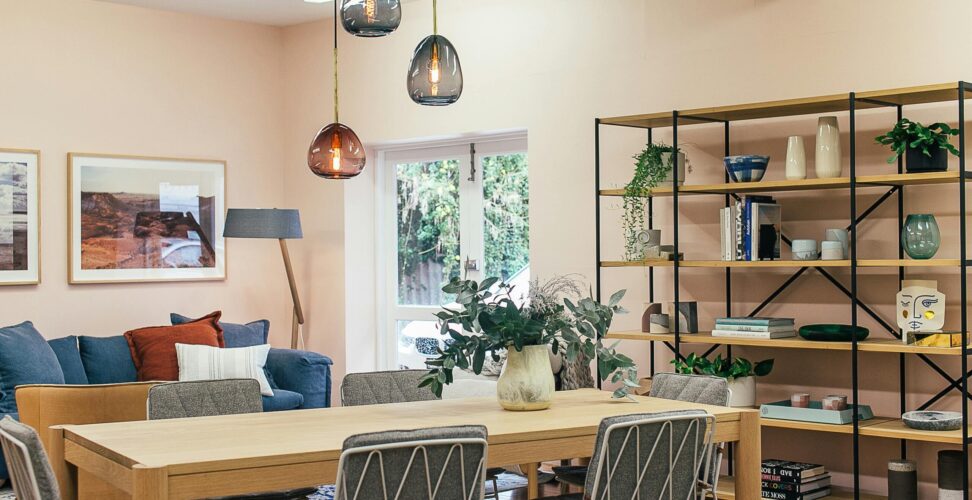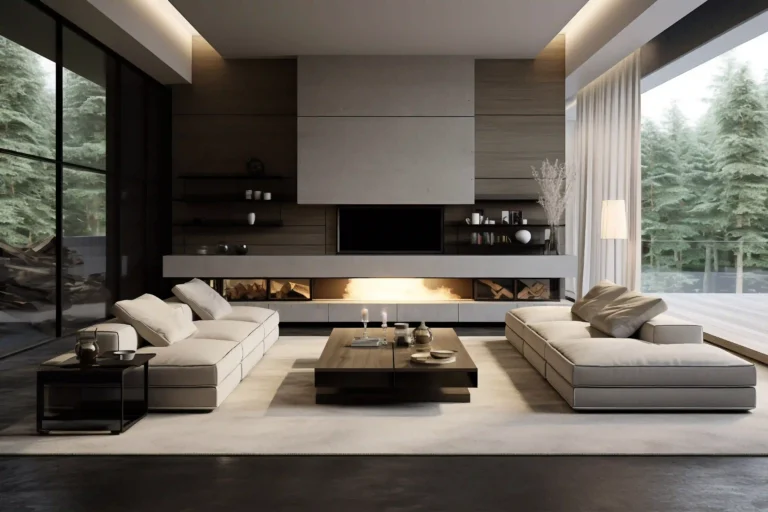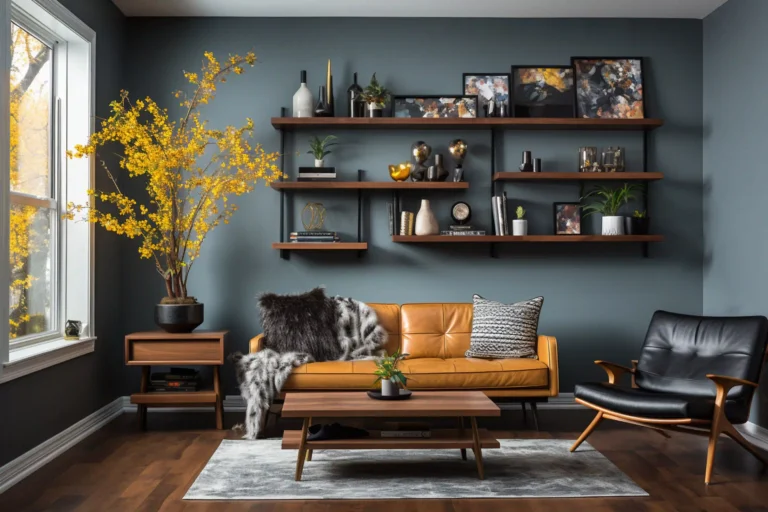Table of Contents
Introduction to Scandinavian Interior Design
Scandinavian interior design is admired globally for its simplicity, functionality, and beauty. Originating from the Nordic countries, it emphasizes clean lines, natural materials, and a neutral color palette. But there’s more to Scandinavian interiors than just whites and grays. The inclusion of colors, albeit subtle, adds warmth and personality to these serene spaces.
Scandinavian design focuses on creating a cozy, inviting atmosphere, often referred to as ‘hygge.’ This concept is about enjoying life’s simple pleasures, which is reflected in the home decor style. In this blog, we’ll explore the colors that define Scandinavian interiors and how you can incorporate them into your home.
The Palette of Modern Scandinavian Interior Design
Modern Scandinavian interior design often features a blend of neutral tones and subtle pops of color. While white is predominant, other colors like light gray, soft blue, and muted pastels are common. These colors help maintain the light, airy feel of Scandinavian homes.
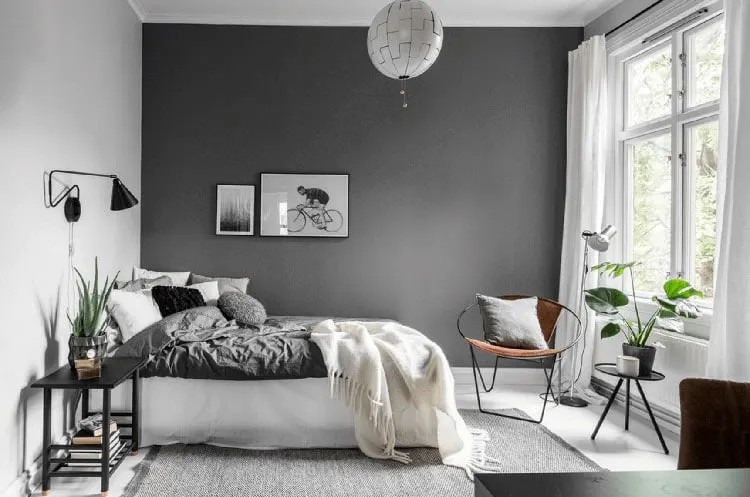
Primary Colors:
- White: The most dominant color in Scandinavian interiors. It reflects light, making spaces feel larger and more open.
- Gray: Often used in varying shades, gray adds depth and contrast without overwhelming the space.
- Pastels: Soft pinks, blues, and greens are used sparingly to add a touch of color while maintaining the overall calm vibe.
Accent Colors:
- Blues and Greens: Inspired by nature, these colors are perfect for adding freshness and tranquility.
- Black: Used primarily in furnishings and decor items to create contrast and define spaces.
- Wood Tones: Natural wood adds warmth and texture, crucial for achieving a cozy Scandinavian look.
To incorporate these colors, start with a neutral base and add accents through textiles, artwork, and small furniture pieces.
Embracing Minimalist Scandinavian Interior Design
Minimalism is at the heart of Scandinavian design. This means fewer items, each chosen for its beauty and utility. The color palette in minimalist Scandinavian interiors is typically limited to ensure a clutter-free environment.

Key Characteristics:
- Monochrome Scheme: Using shades of a single color, like gray or white, to create a cohesive look.
- Natural Elements: Incorporating wood, stone, and plants to add texture and life to the space.
- Functional Decor: Every item should have a purpose. Opt for furniture with clean lines and simple designs.
To achieve a minimalist Scandinavian interior, stick to a neutral color palette and add interest through different textures and materials. For example, a white room with a wooden coffee table and a few green plants can look stylish and inviting without feeling cluttered.
The Magic of Dark Scandinavian Interior Design
While Scandinavian design is often associated with light and airy spaces, dark Scandinavian interior design is equally captivating. Using darker shades can create a dramatic, cozy ambiance that feels both luxurious and intimate.
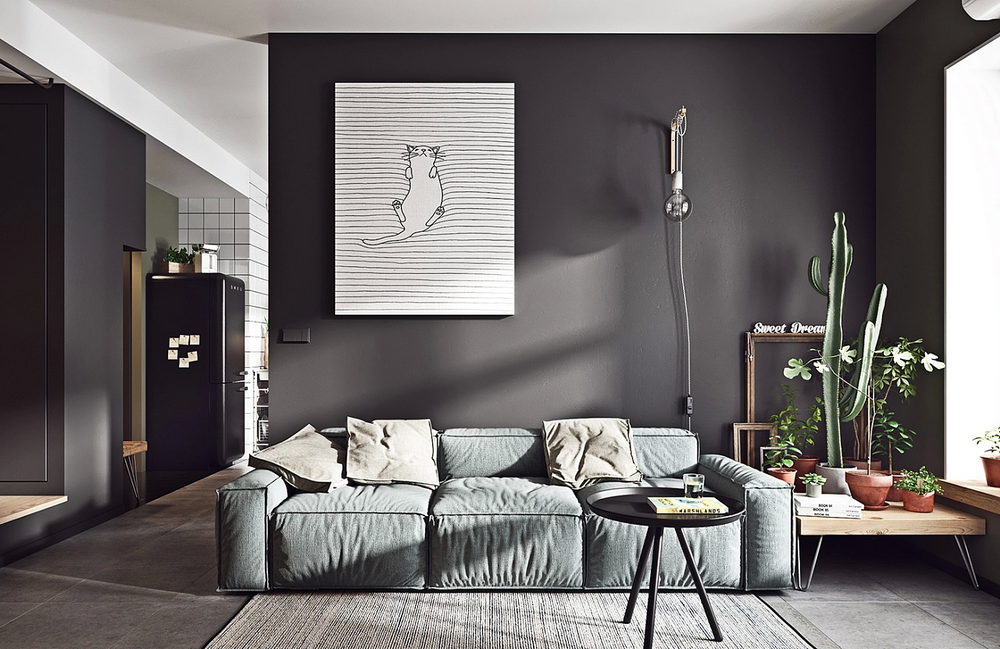
Primary Colors:
- Dark Gray and Black: These colors add sophistication and create a striking contrast against lighter elements.
- Deep Blues and Greens: These shades can add depth and a sense of calm to the space.
- Rich Browns: Often used in wooden furniture and flooring to add warmth.
Design Tips:
- Balance with Light: Use lighter accents, such as white or light gray textiles, to balance the dark colors.
- Texture: Incorporate different textures, like velvet cushions or wool throws, to add interest and comfort.
- Lighting: Use soft, warm lighting to enhance the cozy feel of dark interiors.
By carefully balancing dark and light elements, you can create a stylish and welcoming dark Scandinavian interior design.
Incorporating Color in Scandinavian Home Interiors
Adding color to a Scandinavian home can be done subtly and tastefully. The key is to maintain the simplicity and harmony characteristic of Scandinavian design.

Ways to Incorporate Color:
- Textiles: Cushions, rugs, and curtains are easy ways to introduce color without overwhelming the space.
- Artwork: Choose pieces that feature soft, muted tones or nature-inspired themes.
- Furniture: Opt for furniture pieces in pastel colors or with colorful upholstery to add a gentle pop of color.
Color Combinations:
- White and Pastel Blue: Creates a fresh, airy feel perfect for living rooms and bedrooms.
- Gray and Soft Pink: Adds a touch of warmth and sophistication.
- Green and Natural Wood: Brings in a natural, calming vibe.
Remember, the goal is to enhance the space’s serenity and simplicity, not to overwhelm it with too many colors.
Key Takeaways for a Colorful Scandinavian Interior Design
Creating a colorful Scandinavian interior design involves balancing neutral bases with subtle pops of color. Focus on natural materials, functional decor, and a cohesive color palette to maintain the simplicity and elegance of Scandinavian design.

- Start with Neutrals: Use white, gray, and natural wood as your base.
- Add Color Sparingly: Introduce soft pastels or nature-inspired colors through textiles and decor.
- Keep It Functional: Choose items that are both beautiful and practical.
By following these tips, you can create a colorful yet serene Scandinavian interior that reflects both modern trends and timeless elegance.
People Also Ask
Q1. What Are the Colors for Scandinavian Interior Design?
Scandinavian interior design primarily uses a neutral color palette with subtle pops of color. The most common colors include:
White: Dominant in Scandinavian interiors, white reflects light and makes spaces feel larger and more open.
Gray: Various shades of gray add depth and contrast without overwhelming the space.
Pastels: Soft pinks, blues, and greens are used sparingly to add a touch of color while maintaining a calm vibe.
Blues and Greens: Inspired by nature, these colors add freshness and tranquility.
Black: Often used in furnishings and decor items to create contrast and define spaces.
Wood Tones: Natural wood adds warmth and texture, crucial for achieving a cozy Scandinavian look.
Q2. What Are Scandinavian Traditional Colors?
Traditional Scandinavian colors are rooted in the natural environment and the need to create bright, welcoming interiors in regions with long, dark winters. The traditional colors include:
White: Reflects light, creating a bright and airy atmosphere.
Cream and Beige: Soft, warm tones that add coziness.
Gray: Provides a neutral backdrop and complements other colors.
Red: Often used as an accent color, inspired by traditional Scandinavian barns and cottages.
Blue: Light blue hues are common, reflecting the sky and water.
Green: Inspired by forests and natural landscapes, green adds a calming effect.
Q3. What Color Are Scandinavian Homes?
Scandinavian homes typically feature a light, neutral color palette to maximize natural light and create a sense of space. Common colors include:
White and Off-White: Dominant for walls, ceilings, and large furniture pieces.
Gray: Used in various shades for walls, furniture, and textiles.
Pastels: Soft blues, pinks, and greens as accents in decor and textiles.
Natural Wood Tones: Light wood for flooring, furniture, and decor elements.
Black and Dark Gray: Used sparingly for contrast in fixtures, furniture, and accessories.
Q4. What Is the Scandinavian Color Theory?
Scandinavian color theory is based on simplicity, functionality, and a connection to nature. Key principles include:
Neutral Base: Start with a neutral color palette (white, gray, beige) to create a clean and calming foundation.
Natural Inspiration: Draw colors from the natural environment, such as blues from the sky and water, greens from forests, and wood tones.
Subtle Accents: Use pastel shades and muted colors to add interest without overwhelming the space.
Light and Reflection: Maximize natural light with light colors and reflective surfaces to create a bright, airy feel.
Balance and Harmony: Ensure colors and elements work together harmoniously to maintain a cohesive and serene interior.

